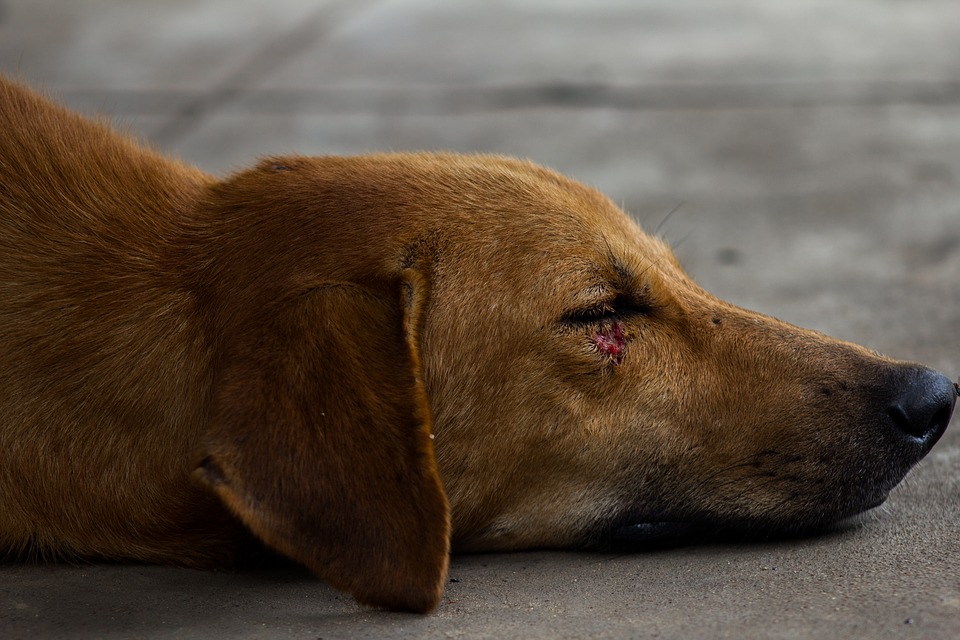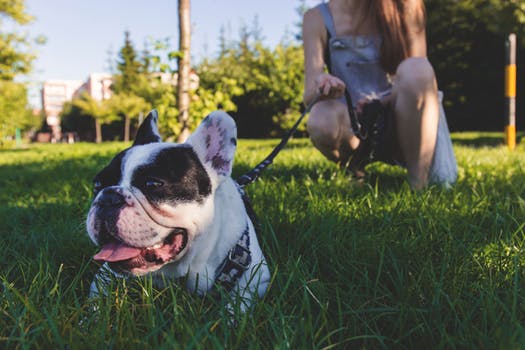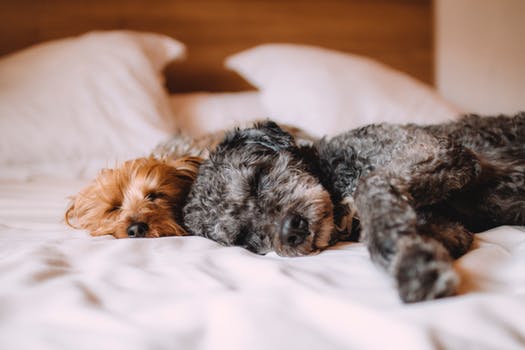Sometimes, when surgery is necessary, it’s better for your dog to get the right healing procedure so they can be back on their feet as soon as possible. It’s important to know that the postoperative process is just as important as the surgery itself. Here are 20 ways to help your dog get back to speedy recovery in no time! 
Isolation is Necessary
When your dog has undergone surgery, time truly is key. However sociable your pup may be, it’s not advised to be having large social gatherings in your home while your dog is still recovering.
One of the reasons for this is because your dog will most likely still be in a lot of pain, especially once the anesthesia wears off, and even the sweetest dogs might snap or get restless.
It’s also important to keep your dog away from other pets as they might not be their own gentle selves while in pain. If you have other dogs in the house, it’s a good idea to keep your recovering dog in a separate room from the other canines as they might not interact too well with each other.
The smells of other dogs and a foreign place might be enough to stir up your dog post-surgery since its sense of smell might change. Hence, keeping the recovering dog in a separate room will not only introduce the homely scents but will also ensure a faster recovery, at least for the first day.
Smaller Meals
Before a surgical procedure is commenced, the vet will have let you know that dogs are required to fast a certain amount of time before the surgery. Once your pup gets to go home, don’t give him or her the normal amount of food you would give on any other day.
Your dog will still be groggy from the operation and shouldn’t be given too large of a meal, in case of vomiting. You are also advised to give your dog blander meals for the first or second meal at home before returning to his/her normal diet unless specifically instructed by the veterinarian.
Proper Wound Care
Proper wound care is probably the most important part about the postoperative process. Since your dog won’t be able to care for him/herself, it’s up to you to help him/her as much as you can for a speedy recovery.
There are several things that you will need to do to ensure proper wound care. It is your first priority to do exactly as the veterinarian instructs you when dressing, cleaning, and monitoring wounds. You must also ensure that all bandages stay dry and clean at all times.
No Licking
Remember this at all times: absolutely no licking! Unfortunately, dogs’ saliva do not have any natural healing properties. In fact, it does the opposite: saliva is full of bacteria and germs which can slow down the healing process or even cause an infection if it comes in contact with an open or healing wound.
If your dog has sutures, it’s possible that excessive licking can tear up the sutures or reopen the wound.
Play time!
When dogs are recovering from surgery, they are often restricted from doing a lot of things which might cause unnecessary movement. This is to prevent the possibility of the stitches tearing or opening.
Needless to say, this can lead to having a very bored and restless dog who might be difficult to control if he/she has a lot of energy (as most dogs are).
Instead of going out to the park for a frisbee game or going out on a trail for a run, it’s probably best to stay indoors where movement is more limited and the area is much cleaner. But staying indoors doesn’t mean that you can’t still have fun!
You can get your pup some intellectual games where your dog has to think more than move. This will stimulate its brain and reduce excess energy while not endangering the wound.
You can also teach it new simple tricks that it doesn’t already know (like shaking or wiggling its head on command) since there will be plenty of indoor playtime.
Painkillers
This is one you’ll need to ask and check with your vet. Dogs will often be in a lot of pain after returning home as the anesthesia wears off and will possibly have reactions to it like growling, snapping, and being constantly restless.
Asking your vet if you’re allowed to give him/her painkillers to ease the pain will make your job of taking care of your pup easier! It can certainly help to soothe your poor miserable pup.
Keeping It On Leash
Once your pup is cleared for going outside more frequently, it would obviously be very excited. However, you will still need to keep him/her on the leash for the entire duration of the walk, even when going to the bathroom!
Bear in mind that however well trained your dog might be during walks, having them on the leash will ensure that you are aware of how much exercise they are getting.
Dogs often move around a lot when looking for a place to go potty, and though it might not seem like much, a little bit of strenuous exercise can be a lot on a healing pup.
Any Questions?
Both before and after the surgery, it’s important to ask your vet lots of questions regarding your dog’s health and any concerns you might have.
They shouldn’t have any qualms about your eagerness for understanding. Some questions you can ask include an emergency contact number in case something goes south when you get home, how to dress and bandage properly, or any concerns with the layout of your home.
Dog Friendly Home
After surgery, your dog won’t be able to move around as well as he/she used to, and a lot of everyday things might become a potential hazard when you aren’t looking.
For starters, try to clean up any miscellaneous items which might be lying around the house. Jumping around usually isn’t advised, so maybe try setting up some dog beds on the floor so they don’t end up hopping on and off the furniture.
Also, an important addition to homes with stairs should be a stair gate so the stairs don’t become a danger to your dog.
Attention: Walks
Weather alert! It’s absolutely necessary for you to pay attention to the weather when you’re out walking your dog.
If it’s rained earlier, then the sidewalks are probably going to be muddy. In this case, you’re going to need to wrap up the wounded area with a plastic bag or a t-shirt to make sure the bandages don’t get wet or dirty.
If not, make sure you know that it won’t start pouring while you’re out on your stroll.
Medication Response
Dogs are just like humans, they can have different responses to different types of medications.
As a caretaker, you will need to pay attention to any side effects that your dog might be experiencing from taking prescribed medication.
If anything seems severely out of the ordinary, it’s probably best to give the vet a call and ask them if your dog is behaving normally for a recovering dog. Some side effects include vomiting, diarrhea, or lack of interest in eating. 
Where Is Your Fact Sheet?
Usually, you should receive a fact sheet when you pick your dog up from surgery. If you don’t have one on you now, turn around and go get one because it has lots vital information.
This can include types of medication and necessary dosage, things to pay attention to when caring for your dog, and a report on the actual surgery.
Physical Rehab
Physical rehabilitation is becoming a popular activity for dogs who are recovering from surgery. It does come at a price, but you can also learn to learn some rehab tricks of your own at home.
Rehab comes with a number of advantages for your dog including deep relaxation and reduced pain. Try asking your vet if your dog is allowed to go through physical rehab and what kind is best for your pup.
Interaction Time
If you’ve ever fallen severely ill or been admitted into a hospital, you’ll know how you can feel while you’re getting your body back on track.
With this in mind, try to interact with your pup in shorter intervals, giving them a little activity before letting them rest. You can do this multiple times a day – just make sure that they are getting plenty of rest and importantly, love from you.
Crates
Although no dog likes sitting in his/her crate and you probably don’t like seeing your dog in there either, having them rest in a crate with water and some food is probably one of the fastest ways of ensuring your dog has a fast recovery.
While they’re in there, they will get plenty of rest and not move around too much, allowing the wounds to heal faster than they would if your dog was constantly moving around.
Intradermal Sutures
This is an option for dogs that need stitches. Dogs tend to lick and chew on a lot of things, sutures included.
Intradermal sutures are sutures which are located beneath the surface of the wound rather than being more external – this can help with the chewing issue.
Ask your doctor if these kinds of sutures can be done and if they are of any benefit for your dog’s particular procedure.
Consider Skin Soothers
Wounds can be irritating to the skin and can create an unbearable itch. Skin soothers can be a reliable option to reduce the irritation and stop your dog from being constantly worried about his/her wound.
They also often help speed up the healing process because of its anti-inflammatory, anti-bacterial, and anti-fungal properties.
Elizabethan Collar & Its Alternatives
Yes, your dog might look a little silly wearing a cone, but it’s for the best. If it’s advised by your doctor, then it’s best you put it on to stop the inevitable. However, wearing the Elizabethan collar can be dangerous sometimes when your dog is playing with children or is around an area with a lot of delicate items.
In this case, there are some alternatives which you can try out to see if it works for you. This includes a cloth-based cone collar, or a restrictive collar to still stop it from chewing and licking the wound.
Orthopedic Dog Beds
Orthopedic dog beds are great for dogs who have just come back from surgery. It is usually created from a memory foam which will shape itself around your dog’s body so that it distributes the weight evenly, taking off pressure and reducing pain.
It can also regulate its temperature so that your dog stays warm but doesn’t get too hot while it’s asleep. It is also useful in the sense that it helps protect your dog from hurting itself further by providing it with a safe and comfortable environment to rest in.
A good orthopedic dog bed can last for years and remain useful even after your dog’s operation. Keep your dog using its orthopedic bed and it will enjoy a restful sleep daily. Your dog will also enjoy overall better health and circulation, preventing certain diseases such as arthritis.
This may seem like a lot of information, but make sure that you understand it thoroughly. Little things like these really show your dog how much you care for them and their health. Take it as a learning process for you both, and at least you’re going to have plenty of quality time together!











